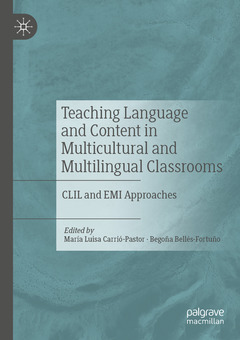Teaching Language and Content in Multicultural and Multilingual Classrooms, 1st ed. 2021 CLIL and EMI Approaches

This edited book explores critical issues relating to Content and Language Integrated Learning (CLIL) and English as a Medium of Instruction (EMI), setting out their similarities and differences to demystify the terms and their implications for classroom practice. The authors show how CLIL and EMI practices are carried out in different institutional contexts and demonstrate how both approaches can benefit language and content acquisition. This book is addressed to second/foreign language teaching staff involved in teaching in English at primary education, secondary education, and higher education levels.
María Luisa Carrió-Pastor is Professor and Head of the Applied Linguistics Department at Universitat Politècnica de València, Spain.
Begoña Bellés-Fortuño is a Senior Lecturer in the Department of English Studies and Director of the IULMA research institute at Universitat Jaume I, Spain.
Date de parution : 12-2021
Ouvrage de 377 p.
14.8x21 cm
Date de parution : 12-2020
Ouvrage de 377 p.
14.8x21 cm



